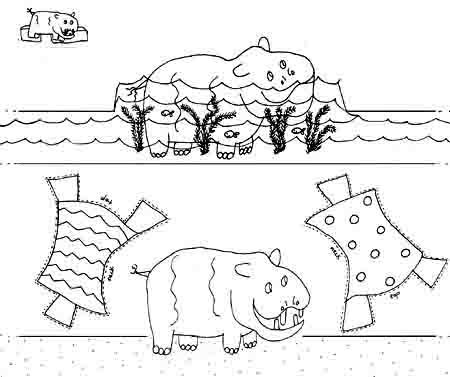Hippo
Facts.
The hippopotamus
is a large, chiefly aquatic African mammal, Hippopotamus amphibius,
having dark, thick, almost hairless skin, short legs with four-toed
hooves, a short tail, small ears, bulging eyes on top of the head
adapted for underwater vision, and a large, broad, wide-mouthed,
rounded muzzle.
Its skin
secretes a sticky mucus that protects it and helps it to retain
water on dry land. Front teeth incisors are horizontal and tusklike,
adapted for rooting up aquatic (water) plants. They are cud-chewing
mammals. Like all mammals they have hair, mostly on the inside
of the ears and on the muzzle and tail.
The hippo
is also called “river horse” because it is in the horse
family and is adapted to the deep streams, lakes, rivers and grassy
feeding grounds that form its habitat. The male is called a bull
and weighs about 3 to 4 tons. The female is called a cow
and weighs less. Young calves suckle milk from their mothers.
Hippos live in herds of about 15 or 20. The hub of the group is
the band of females and their young.
The group
lives on territory patrolled by a dominant, solitary male who
is at least 20 years old. He defends his territory. They spend
18 hours a day in water with only their eyes, ears, and nostrils
above the surface to keep cool and minimize heat loss, and to
support their huge bodies. At dusk and during the night, they
leave their water retreat to feed in the grasslands bordering
Africa’s lakes, streams and rivers but they always stay near
water. They are fast runners.
Despite their
massive weight, hippos can run faster than a man. Hippos communicate
by roaring, foot-stamping, and scent-marking.
Top
![]()
